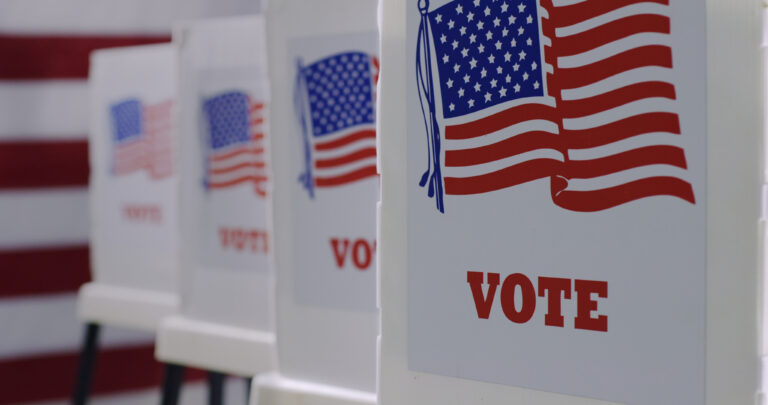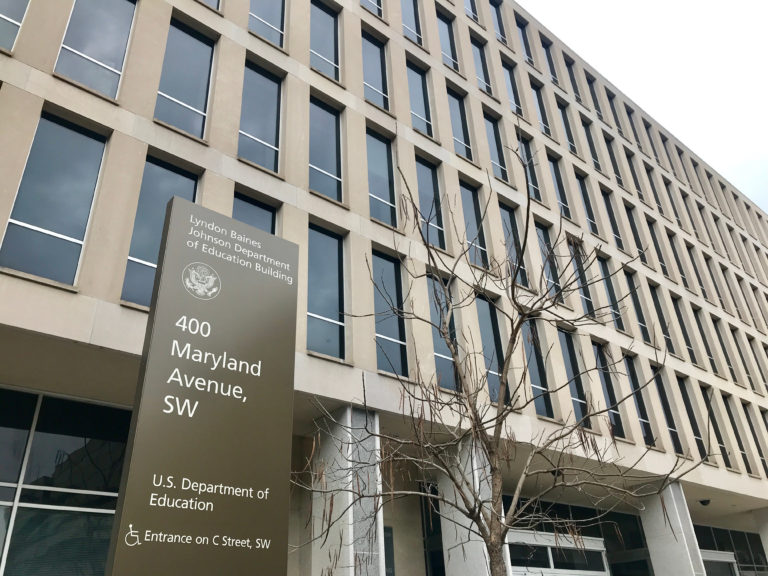Young voters have been an elusive, but increasingly important, bloc in recent elections. Since 2016, the young adult cohort has experienced significant growth in voter registration, record voter turnout, and a marked increase in enthusiasm for political participation—making this demographic a critical piece of the electoral puzzle for candidates seeking office. [The Washington Post, subscription model; ABC News]
In light of that shift, both Democrat and Republican candidates at all levels of government have been working overtime to secure favor with young adult voters (ages 18-29) by reaching them where they are: on college and university campuses.
- Who they’re voting for: According to Inside Higher Ed and Generation Lab’s Student Voice flash survey, Democrats are leading with college students: 57% of surveyed students said they planned to vote Harris/Walz, and just 19% said they were planning to vote Trump/Vance. However, about one-quarter of students were still undecided at the time of the survey, or weren’t planning to vote at all, meaning the pressure is on candidates to sway some voters.
- Key issues for students: The same survey revealed the top three issues influencing students’ votes: the economy and cost of living came out on top (52%), followed by reproductive rights (45%) and concerns about the future of democracy (26%). Perhaps surprisingly, lower on the list were issues associated with this demographic, including the Israel-Hamas war (11%) and student loan debt (13%).
Here’s a glimpse into what efforts are being made on campuses in key swing states to ensure students “Get Out The Vote” — and what stands in their way:
Arizona
Candidates from both political parties are hustling to Arizona college campuses to appeal to student voters, where Biden beat Trump by just over 10,000 votes in 2020 and 49% of registered voters ages 20-30 are Independents.
Beto O’Rourke, former Democratic congressman from Texas, urged students at Arizona State University in Tempe and the University of Arizona in Tucson to vote for—and encourage their families to vote for—Kamala Harris. Trump, on the other hand, has outsourced on-the-ground efforts in Arizona to political action groups like Turning Point Action. College Republican student groups are also getting in on the action, throwing parties and other events, especially catered to young men, who have also been a target demographic for Republicans in this election. [Inside Higher Ed]
Georgia
In Georgia, which is expected to be closely contested this election, college students face issues before they even get to the ballet box.
In September, the Georgia State Conference of the NAACP and the Georgia Coalition for the People’s Agenda filed a lawsuit in federal court arguing that an election law passed earlier this year disenfranchises college students by improperly zoning dormitories as nonresidential, making students who live there ineligible to register to vote. Additionally, out-of-state students and students without a Georgia ID or driver’s license must register to vote using a paper application, adding an additional hurdle to the process that may dissuade students from voting. [11 Alive]
Political student groups like Young Democrats and College Democrats and the conservative Greater Georgia group have been helping students register to vote by tabling on campus, hosting events, and sharing information on social media. [Georgia Recorder]
Michigan
Kamala Harris and Tim Walz held a rally in Ann Arbor earlier this week, right near the University of Michigan, with a big focus on students. She said that students are “rightly impatient for change,” and touched on issues of school safety and climate change. [Bridge Michigan]
Michigan has been working to make voting for college students more accessible over the last several years. No-reason absentee voting makes it easier for students to vote in their hometown local elections without leaving their dorms. Michigan also allows same-day registration, meaning young people who make a last-minute decision can still have their voices heard.
However, the Uncommitted Movement is still active on Michigan campuses: students who are reluctant to support one candidate, but would not prefer the other. This contingent of students will likely decide on Election Day, making the whole of the student voter bloc in the state a less certain win. [Politico]
Nevada
According to the Nevada Secretary of State’s voter registration records, there are nearly 214,000 voters aged 18-24 registered to vote as of October 1. To continue fostering political engagement, several higher ed institutions in Nevada are working to make voting easier for students on campus and increase young voter turnout.
The University of Nevada, Reno and the University of Las Vegas are assisting students who live in dormitories with voter registration and mail-in ballots. Community colleges are in on the action as well: Truckee Meadows Community College’s student government association is working on a similar initiative to get out the vote in hopes of getting at least 50% of their student body to vote this year. [The Daily Indy]
North Carolina
As North Carolina continues to grapple with the fallout from Hurricane Helene and some students remain displaced, plans for engaging students on electoral politics have been far more difficult to enact.
The North Carolina Board of Elections unanimously approved a plethora of emergency measures to help victims of Helene exercise their right to vote, and colleges and student groups have been reaching out via social media to inform students of these changes and encourage them to vote however possible, given the circumstances [Mother Jones]
However, the aftermath of Helene is not the only barrier to voting. In September, the North Carolina Court of Appeals ruled that a digital student ID, or any image of a photo ID, was not an acceptable ID to vote. Colleges including UNC Chapel Hill and Elon University have since scrambled to supply students with physical ID cards and posted guidance on how to get one, and what other IDs are acceptable for voting, online. [The Associated Press]
Pennsylvania
First-time voters ages 18 and 19 are the target for candidates in Pennsylvania, some before they even graduate high school. However, misinformation from local election officials about voting eligibility has been confusing out-of-state students attending college in Pennsylvania, prompting the state Department of State to weigh in: “College students living in Pennsylvania have the right to register to vote at their college address if they so choose, and county boards of elections have a duty to process those applications.” [ABC News; Inside Higher Ed]
Wisconsin
The margin of victory in Wisconsin is about 21,000 votes, just a fraction of the number of students enrolled in the University of Wisconsin system and other smaller, private institutions throughout the state. In recognition of this, both parties have invested in campaigning on campuses in this key state. [Wisconsin Watch]
The Wisconsin Democratic coordinated campaign now has seven full-time organizers focused on college campuses and a youth organizing director, who have been working on making inroads with students since the fall of 2023. Meanwhile, Republican student groups like Turning Point Action, College Republicans of America, and others have been funded by the Republican Party of Wisconsin and local GOP officials to appeal to undecided voters.
But students have experienced voter intimidation. Thousands of voters aged 18-25 in Wisconsin have received unusual text messages threatening fines and prison time if they vote “incorrectly.” Voting rights groups including Free Speech for People and the League of Women Voters in Wisconsin have called on the Wisconsin Attorney General Josh Kaul and U.S. Attorney General Merrick Garland to investigate. [Truth Out]




